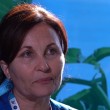
Paul Manley
G.S-S. I gather that you have decided to leave your current university post and yet remain as a consultant to others interested in Small Animal Orthopaedics. Since you graduated with an MSc, what have you got out of your time in orthopaedics?
P.M: Geoff: after finishing my MSc in 1978, I continued my formal education with a small animal residency at University of CA at Davis. My internship and Master’s degree had prepared me very well for the orthopaedic portion of the residency especially when it came to orthopaedic traumatology. Your tutelage had prepared me well for fracture fixation, especially plate fixation. I became increasingly interested in plastic and reconstructive surgery during my residency due to my mentor’s clinical interest. After my residency I did a one year clinical fellowship (I guess today we would call this an instructorship) at CSU’s College of Veterinary Medicine. The caseload there was a mix of general surgery and orthopaedics; again my early training and education set me up very well in orthopaedics and I became more confident as the lead surgeon on a large variety of cases. From Colorado I went to a large specialty practice in the Boston, MA area. There were four surgeons in this practice and I felt very comfortable on the most difficult soft tissue and orthopaedic cases. It was in this practice that I started to foster an interest in arthritis and different surgical modalities to treat it. After 2 ½ years in private practice I was recruited to a faculty position in Orthopaedics at the University of Wisconsin. I became interested in total hip replacement in dogs and used hip replacement as a model to look at mechanical and histomorphometrical aspects of hip replacement in dogs, and as a model for uncemented hip replacement in human beings. This was the focus of my research for several years, until I began looking at histomorphometry of bone and cartilage associated with osteochondrosis and fragmented medial coronoid processes. The MSc certainly provided a strong introduction into orthopaedic research at the very beginning of my career. Many mentors along the route provided me with the stimulus to continue to question and probe the intricacies of orthopaedic science.
G.S-S. You have published and spoken at meetings considerably; which paper or presentation are you most proud of?
P.M. There are several, but I guess that I most proud of the work that we did on histomorphometry of stable and unstable total hip replacement, a clinical retrieval study. This was initially presented by a veterinary student that went on to complete a surgical residency and is now on faculty at Iowa State University. There was a lot of satisfaction in seeing this student mature through the process, present seminal work and launch her career.
G.S-S. You have had a lot of experience with ruptured ACL. I do not want to start a battle, but would like you to give me a reminiscence of how you treated them in your early days and the evolution to how you now treat them and, I suppose, what you will perform in your referral practice. There are so many variations of the many techniques available; I would just like our readers to have to opportunity of seeing the evolution as it took place in one surgeon’s experience and mind. This is certainly not an attempt on my part to ‘start a vitriolic discussion’. Possible your historical report will cause others to review their own history as to how they evolved their current method of dealing with the problem? One cannot accept that the evolution of new ideas has ceased!
P.M. Wow Geoff, this is a huge topic and I suspect that it will show my age to those that read this. Be that as it may, I will try to remember all the techniques that I have tried and what I liked and disliked about them as my own skills and knowledge evolved-this will truly be a walk down memory lane. In the mid 70’s when I graduated from Veterinary School the technique du jour was the Singleton method. For those that cannot quite recall what this entailed, this was the anatomic replacement of the cranial cruciate ligament with fascia lata or suture material that was passed through femoral and tibial tunnels. I believe I was initially taught to use multifilament suture, but also used monofilament and occasionally fascia lata. I performed this technique for a few years, but ultimately abandoned it sometime during my residency training as newer techniques were introduced to me. It is noteworthy to mention that I had successes and failures with this technique, but that most failures were due to suture or fascia lata breakage. As a resident at University of California, Davis, I even performed this technique with an autogenous skin graft instead of the more usual suture material. In the late 1970’s, it was popular to perform either the classic Flo technique or the modified lateral suture technique, as well as the fascia lata or patella tendon autograft in an ‘over-the-top’ fashion as described by Arnoczky. Through my residency I was exposed to all of these techniques without a predilection for any one technique; it very much depended upon my faculty mentor of the moment. After my residency, I did a fellowship at Colorado State University. It was here where Don Piermattei introduced me to the fascia lata and /or patella tendon ‘over-the-top’ technique combined with the lateral suture technique. The theory was that the lateral suture would protect the autogenous fascia or patella tendon graft until it revascularised or at least became strong enough to withstand the mechanical loads placed on it by the patient. I continued to perform this technique, or variations of it for the next decade, both in private referral practice and in an academic environment. Although I enjoyed many successes, I also endured some disappointments as either the graft or suture failed. At some point, I left the autograft behind and just performed the lateral suture technique, doing some research on the best material and the potential advantage of the crimp/clamp system over a conventional knot tie. In this period, I also dabbled with the fibular head transposition, but abandoned in after a few dozen cases due to what I felt was inadequate stabilization. In the mid 1990’s, I became interested in the tibial osteotomies, especially for the larger working dogs as I felt the extracapsular techniques had a high failure rate in this population. The tibial plateau levelling osteotomy (TPLO) as described by Slocum became a mainstay for my treatment of cranial cruciate failure in the large and giant breed dogs. I have adjusted my performance of this technique based on newer information presented by Dejardin, Kowaleski and others. In general, I am very satisfied with the results of this technique with a relatively low complication rate. The more recent introduction of the Synthes locking TPLO plate made a huge difference in almost eradicating the complication of implant failure. Additionally, the concept of probing the meniscus either by arthroscopy or through an arthrotomy, as presented by the groups at Missouri and Florida has significantly reduced the missed meniscal tears during surgery. Recently I have performed a few tibial tuberosity advancements (TTA), but I have not performed enough of these procedures to comment on the efficacy or advantages and disadvantages compared to the TPLO.
To the uninformed, it seems that we have morphed from relatively simple surgical procedures for treating cranial cruciate rupture to exceedingly complicated ones. I prefer to believe that as our knowledge has grown about the cruciate ligament and the pathogenesis of cruciate disease, we have come up with novel methods to surgically treat this debilitating condition. Are these new techniques the panacea for surgical treatment of cranial cruciate rupture? I doubt it. The reality is that all of the above-mentioned surgical techniques (and believe me there are many more that I have not listed) work much of the time. However, none of the techniques work all of the time. As surgeons we look for the technique that performs the intended purpose and has the least risks and complications associated with it. Access to the internet has provided our clients with a plethora of information. Many arrive for a first office visit with a lame pet and a notebook full of questions and ideas. As surgeons, we must deliver the best possible advice, together with ‘state-of-the-art’ technology. Will the story of cruciate disease continue to evolve? Most certainly. I think the work of Peter Muir and others will uncover new treatments for cruciate disease, not all of which will be surgical.
As I come to the end of my academic career, I look towards my colleagues for the next chapter in this most interesting saga.















